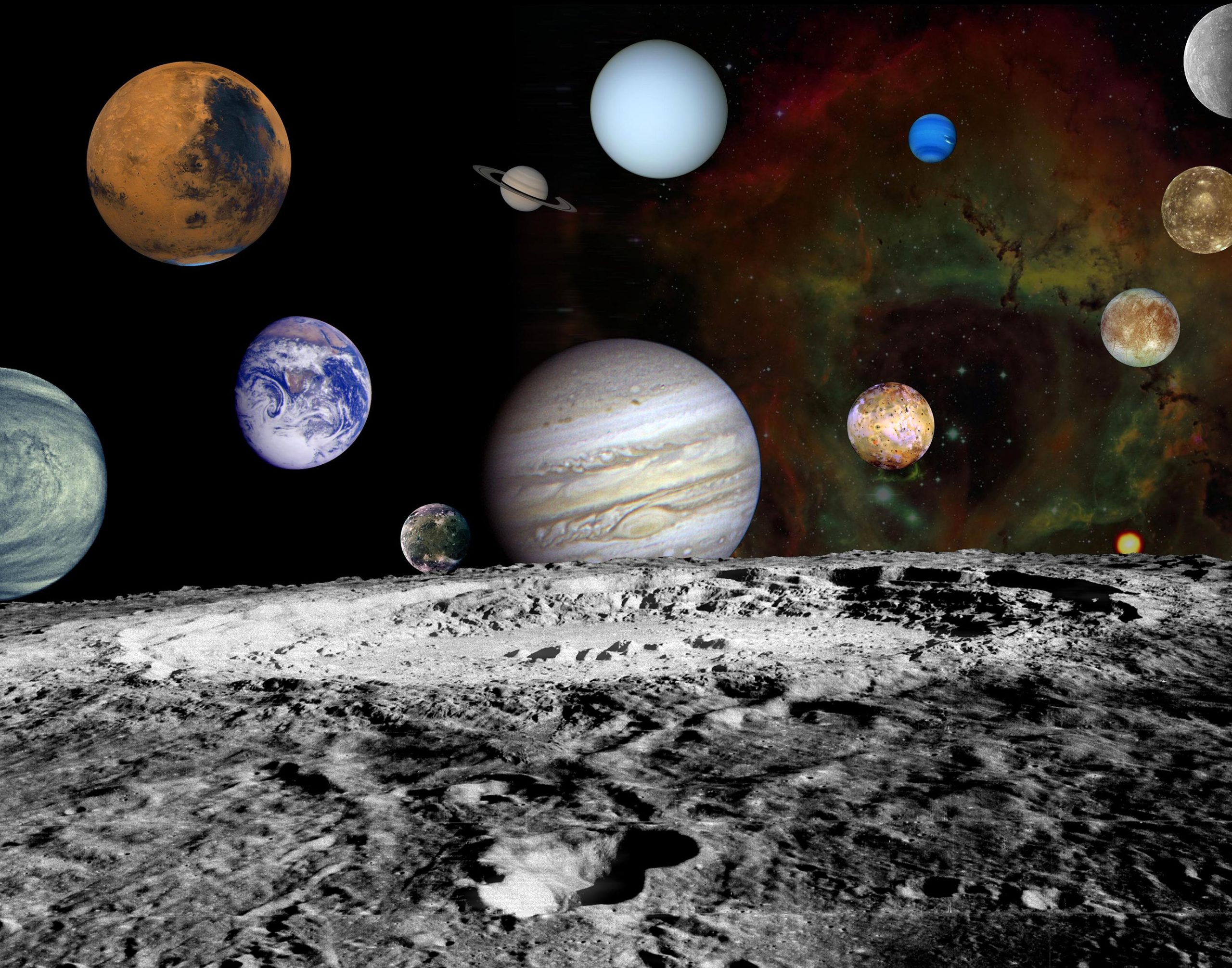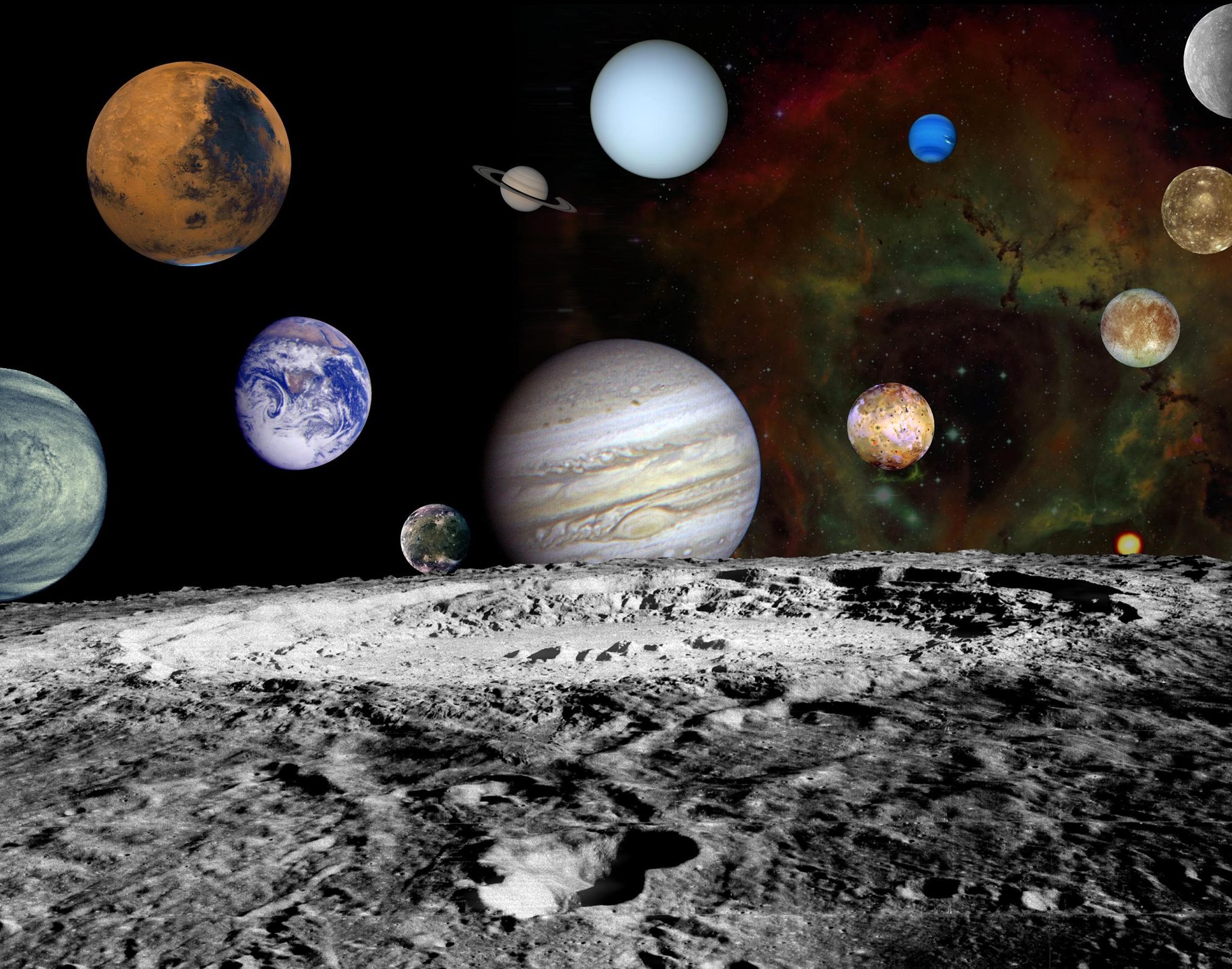Un astrofizician dezvăluie o planetă care ar putea pune capăt vieții pe Pământ


Acest montaj al sistemului solar al celor nouă planete și patru luni mari ale lui Jupiter din sistemul nostru solar este pus în raport cu o redare a culorilor false a Nebuloasei Rozetei. Lumina din Nebuloasa Rozetă este cauzată de prezența hidrogenului (roșu), a oxigenului (verde) și a sulfului (albastru). Majoritatea imaginilor planetelor din acest montaj au fost obținute de misiunile planetare NASA, care au schimbat dramatic înțelegerea noastră despre sistemul solar în ultimii 30 de ani. Credit: NASA/JPL/ASU
Experimentul ilustrează fragilitatea sistemului nostru solar.
Planeta Pământ plutind între[{” attribute=””>Mars and Jupiter would be able to push Earth out of the solar system and wipe out life on this planet, according to a University of California, Riverside (UCR) experiment.
UCR astrophysicist Stephen Kane explained that his experiment was meant to address two notable gaps in planetary science.
The first is the gap in our solar system between the size of terrestrial and giant gas planets. The largest terrestrial planet is Earth, and the smallest gas giant is Neptune, which is four times wider and 17 times more massive than Earth. There is nothing in between.

This illustration shows the approximate sizes of the planets in our Solar System relative to each other. Outward from the Sun, the planets are Mercury, Venus, Earth, Mars, Jupiter, Saturn, Uranus, and Neptune, followed by the dwarf planet Pluto. Jupiter’s diameter is about 11 times that of the Earth’s and the Sun’s diameter is about 10 times Jupiter’s. Pluto’s diameter is slightly less than one-fifth of Earth’s. The planets are not shown at the appropriate distance from the Sun. Credit: NASA/Lunar and Planetary Institute
“In other star systems, there are many planets with masses in that gap. We call them super-Earths,” Kane said.
The other gap is in location, relative to the sun, between Mars and Jupiter. “Planetary scientists often wish there was something in between those two planets. It seems like wasted real estate,” he said.
These gaps could offer important insights into the architecture of our solar system, and into Earth’s evolution. To fill them in, Kane ran dynamic computer simulations of a planet between Mars and Jupiter with a range of different masses, and then observed the effects on the orbits of all other planets.
The results, published in the Planetary Science Journal, were mostly disastrous for the solar system. “This fictional planet gives a nudge to Jupiter that is just enough to destabilize everything else,” Kane said. “Despite many astronomers having wished for this extra planet, it’s a good thing we don’t have it.”

Artist’s concept of Kepler-62f, a super-Earth-size planet orbiting a star smaller and cooler than the sun, about 1,200 light-years from Earth. Credit: NASA Ames/JPL-Caltech/Tim Pyle
Jupiter is much larger than all the other planets combined; its mass is 318 times that of Earth, so its gravitational influence is profound. If a super-Earth in our solar system, a passing star, or any other celestial object disturbed Jupiter even slightly, all other planets would be profoundly affected.
Depending on the mass and exact location of a super-Earth, its presence could ultimately eject Mercury and Venus as well as Earth from the solar system. It could also destabilize the orbits of Uranus and Neptune, tossing them into outer space as well.
The super-Earth would change the shape of this Earth’s orbit, making it far less habitable than it is today, if not ending life entirely.
If Kane made the planet’s mass smaller and put it directly in between Mars and Jupiter, he saw it was possible for the planet to remain stable for a long period of time. But small moves in any direction and, “things would go poorly,” he said.
The study has implications for the ability of planets in other solar systems to host life. Though Jupiter-like planets, gas giants far from their stars, are only found in about 10% of the time, their presence could decide whether neighboring Earths or super-Earths have stable orbits.
These results gave Kane a renewed respect for the delicate order that holds the planets together around the sun. “Our solar system is more finely tuned than I appreciated before. It all works like intricate clock gears. Throw more gears into the mix and it all breaks,” Kane said.
Reference: “The Dynamical Consequences of a Super-Earth in the Solar System” by Stephen R. Kane, 28 February 2023, Planetary Science Journal.
DOI: 10.3847/PSJ/acbb6b

„Creator. Amator de cafea. Iubitor de internet. Organizator. Geek de cultură pop. Fan de televiziune. Mândru foodaholic.”
